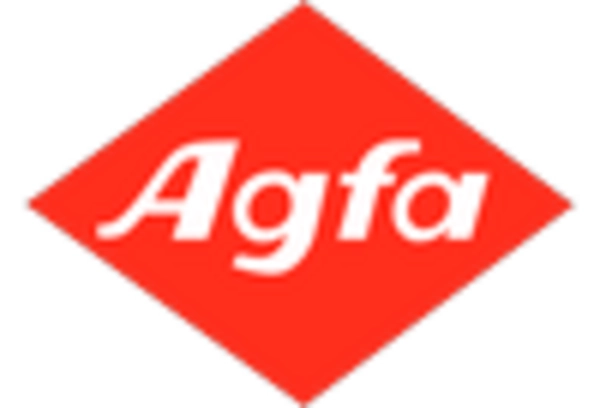Government Initiatives and Funding
Government initiatives aimed at improving healthcare infrastructure in Germany are significantly influencing the medical imaging-workstations market. The German government has allocated substantial funding to enhance healthcare facilities, particularly in rural areas, where access to advanced medical imaging is often limited. This funding is expected to increase by approximately 15% in the next fiscal year, facilitating the acquisition of modern imaging workstations. Additionally, public health policies promoting early diagnosis and preventive care are likely to drive the demand for advanced imaging technologies. As healthcare providers respond to these initiatives, the medical imaging-workstations market is anticipated to benefit from increased investments in imaging equipment and technology, ultimately leading to improved healthcare delivery across the country.
Rising Demand for Diagnostic Imaging
The increasing prevalence of chronic diseases in Germany is driving the demand for diagnostic imaging services, thereby impacting the medical imaging-workstations market. Conditions such as cardiovascular diseases, cancer, and neurological disorders necessitate advanced imaging techniques for accurate diagnosis and treatment planning. According to recent statistics, the incidence of cancer in Germany is expected to rise by 10% over the next five years, leading to a corresponding increase in the need for imaging services. This trend compels healthcare facilities to upgrade their imaging workstations to handle the growing volume of diagnostic procedures. Consequently, the medical imaging-workstations market is poised for growth as healthcare providers seek to enhance their diagnostic capabilities and improve patient outcomes through timely and accurate imaging.
Growing Focus on Patient-Centric Care
The shift towards patient-centric care in Germany is reshaping the medical imaging-workstations market. Healthcare providers are increasingly prioritizing patient experience and outcomes, which necessitates the use of advanced imaging technologies that enhance diagnostic accuracy and reduce wait times. This focus on patient care is reflected in the growing adoption of imaging workstations that integrate user-friendly interfaces and advanced analytics. As hospitals strive to meet patient expectations, the demand for efficient and effective imaging solutions is likely to rise. Furthermore, the emphasis on personalized medicine, which relies heavily on precise imaging for treatment planning, is expected to further drive the medical imaging-workstations market. This trend indicates a potential for sustained growth as healthcare systems adapt to the evolving needs of patients.
Technological Advancements in Imaging Modalities
The medical imaging-workstations market is experiencing a surge due to rapid technological advancements in imaging modalities. Innovations such as 3D imaging, MRI, and CT scans are becoming increasingly sophisticated, enhancing diagnostic accuracy. In Germany, the market for advanced imaging technologies is projected to grow at a CAGR of 7.5% from 2025 to 2030. This growth is driven by the demand for high-resolution images and faster processing times, which are critical for effective patient management. Furthermore, the integration of advanced imaging software into workstations allows for improved workflow efficiency, enabling healthcare professionals to make timely decisions. As hospitals and clinics invest in state-of-the-art imaging equipment, the medical imaging-workstations market is likely to expand significantly, reflecting the ongoing commitment to enhancing patient care through technology.
Increased Collaboration Between Healthcare Providers
Collaboration among healthcare providers in Germany is emerging as a key driver for the medical imaging-workstations market. As hospitals and clinics seek to improve patient care through integrated services, the sharing of imaging resources and expertise is becoming more common. This collaborative approach not only enhances diagnostic capabilities but also optimizes the use of medical imaging workstations. Partnerships between public and private healthcare entities are likely to lead to increased investments in advanced imaging technologies, fostering innovation within the market. Moreover, the establishment of imaging networks allows for better data sharing and access to specialized imaging services, which could further stimulate growth in the medical imaging-workstations market. This trend suggests a promising future for collaborative healthcare models that prioritize efficiency and quality in patient care.

















Leave a Comment